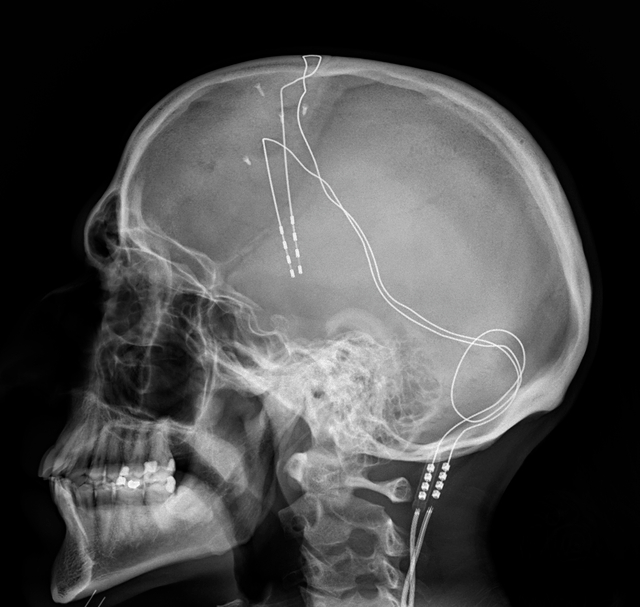
Scientists Develop Electrode-Based ‘Mood Decoder’ That Treats Depression
At the center of the technology are a series of 14 electrodes, which neurosurgeons implant deep within the anterior cingulate cortex and orbitofrontal cortex—two regions of the brain that are involved in mood regulation. Once the electrodes are implanted, researchers observe the participant’s brain activity while ensuring the participant is medically sound. The neurological insights gleaned during the nine-day observation period tell researchers how severe the participant’s depression is at any given time, as well as where the depression is manifesting in the brain.

DBS electrodes implanted into the brain of an obsessive-compulsive disorder patient in 2013. (Photo: Jmarchn/Wikimedia Commons)
This information in turn informs how the neuroscientists conduct personalized DBS, in which electrical stimulation is fed into the brain in an attempt to reduce symptoms of mental illness, epilepsy, and other brain-related disorders. While four externally-fed electrodes are removed from the patient’s brain after the initial nine-day observation period, the others are left behind and energized by a rechargeable battery implanted in the participant’s chest. This all-internal system allows participants to continue receiving DBS after leaving the research facility.
Since beginning their project in 2020, the Baylor team has tested their system with five adult participants whose symptoms were resistant to other forms of treatment. The results of the experimental procedure have so far been “promising,” according to a lead researcher Jiayang Xiao gave at a neuroscience conference last month. One participant experienced such a shift in mood during treatment that he could instantly tell once researchers paused delivering electrical signals to his brain, to MIT Technology Review. The researchers have since resumed that participant’s DBS, resulting in an overall reduction in his depressive symptoms.
Despite these encouraging results, the Baylor team warns that this technology isn’t a particularly practical solution to persistent depression. It’s highly invasive, and between surgery and observation, it’s expensive. Still, their experiment—which will involve another seven participants prior to completion—offers invaluable observations into how depression manifests neurologically. Their results are likely to inform less invasive forms of DBS, as well as new and unconventional treatment methods, in the future.
Now Read: